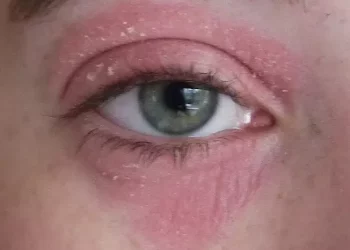Ringworm, despite its name, is not caused by a worm but by a fungal infection known as dermatophytosis. This common skin condition can lead to a variety of symptoms, including red, itchy patches on the skin. While the classic presentation of ringworm involves circular lesions on the scalp, body, or feet, the question often arises: can ringworm also cause a generalized body rash? To understand this, we must delve into the nature of ringworm infections, their symptoms, and how they can manifest across different parts of the body.
Understanding Ringworm: The Basics
Dermatophytosis, or ringworm, is caused by various species of fungi known as dermatophytes. These fungi thrive on keratin, a protein found in the outer layer of skin, hair, and nails. The most common dermatophyte species responsible for ringworm infections include Trichophyton, Microsporum, and Epidermophyton.
Ringworm infections are highly contagious and can be transmitted through direct contact with infected individuals, animals, or contaminated objects like towels or combs. They can affect different parts of the body, each presenting with distinct symptoms and appearances.
Typical Symptoms of Ringworm
The symptoms of ringworm can vary depending on the location and extent of the infection. The classic signs of ringworm include:
1. Circular or Ring-Shaped Lesions: On the scalp (tinea capitis), body (tinea corporis), groin (tinea cruris or jock itch), feet (tinea pedis or athlete’s foot), or nails (tinea unguium).
2. Redness and Scaling: Affected areas often appear red, scaly, and inflamed. The edges may be raised and slightly elevated.
3. Itching and Discomfort: Ringworm can cause intense itching, which can worsen with scratching.
4. Hair Loss (in Tinea Capitis): When ringworm affects the scalp, it can lead to hair loss and bald patches.
The hallmark of ringworm is the distinct circular or ring-shaped appearance of the lesions. However, in some cases, particularly when the infection is widespread or chronic, individuals may experience more generalized skin symptoms, including a body rash.
Can Ringworm Cause a Generalized Body Rash?
While ringworm typically presents with localized lesions, it can indeed cause a more diffuse rash under certain circumstances:
1. Widespread Infection (Tinea Corporis): When ringworm affects larger areas of the body, such as in tinea corporis (ringworm of the body), the lesions can merge together, creating a more generalized rash-like appearance.
2. Chronic or Untreated Infections: If ringworm is left untreated or becomes chronic, the fungal infection can spread and affect larger areas of the skin, leading to a more widespread rash.
3. Complications and Superinfections: Secondary bacterial infections or allergic reactions to the fungus can contribute to a more generalized rash in some cases.
Distinguishing Ringworm from Other Causes of Body Rash
It’s important to differentiate ringworm-related rashes from other skin conditions that can cause similar symptoms. Some conditions that may mimic ringworm include:
1. Eczema (Atopic Dermatitis): Eczema can cause red, itchy patches of skin that may resemble ringworm. However, eczema tends to be more chronic and is often associated with a personal or family history of allergies.
2. Psoriasis: Psoriasis can lead to red, scaly patches on the skin, which may be mistaken for ringworm. Psoriasis lesions are typically thicker and more silvery in appearance compared to the raised, ring-shaped edges of ringworm.
3. Contact Dermatitis: Exposure to irritants or allergens can cause a rash that resembles ringworm. However, this type of rash usually appears in areas that come into direct contact with the offending substance.
4. Pityriasis Rosea: This viral rash can sometimes resemble ringworm due to its circular pattern. However, pityriasis rosea often begins with a single large patch (herald patch) followed by smaller lesions in a characteristic pattern.
Treating Ringworm and Associated Rashes
Ringworm and its associated rashes are typically treated with antifungal medications. Depending on the severity and location of the infection, treatment options may include:
1. Topical Antifungals: Over-the-counter or prescription antifungal creams, lotions, or powders are effective for treating mild to moderate cases of ringworm.
2. Oral Antifungals: In more severe or widespread infections, oral antifungal medications may be prescribed by a healthcare provider.
3. Hygiene Measures: Keeping the affected area clean and dry can help prevent the spread of ringworm and promote healing.
4. Avoiding Contact: Minimizing contact with infected individuals or objects can reduce the risk of spreading the infection.
For generalized or severe rashes associated with ringworm, additional treatments such as topical corticosteroids or antihistamines may be recommended to alleviate itching and inflammation.
Prevention of Ringworm and Skin Rashes
Preventing ringworm and associated rashes involves practicing good hygiene and taking precautions to avoid exposure to fungi:
- Wash Hands Regularly: Thorough handwashing with soap and water is essential, especially after touching pets or using public facilities.
- Avoid Sharing Personal Items: Refrain from sharing towels, clothing, or grooming items with others, especially if someone has a known fungal infection.
- Keep Skin Dry: Fungi thrive in warm, moist environments, so keeping the skin dry can help prevent fungal growth.
- Treat Infected Pets: If your pet has ringworm, seek veterinary care promptly to prevent transmission to humans.
By following these preventive measures, individuals can reduce their risk of developing ringworm and associated body rashes.
Conclusion
While ringworm typically presents with distinct circular lesions, it can occasionally cause a more generalized body rash under certain circumstances. Understanding the symptoms and treatments of ringworm is essential for accurate diagnosis and management. If you suspect you have ringworm or a related rash, consult a healthcare provider for proper evaluation and treatment. With appropriate care, most cases of ringworm can be effectively treated, relieving symptoms and preventing further spread of the infection.
Related Topics:
























